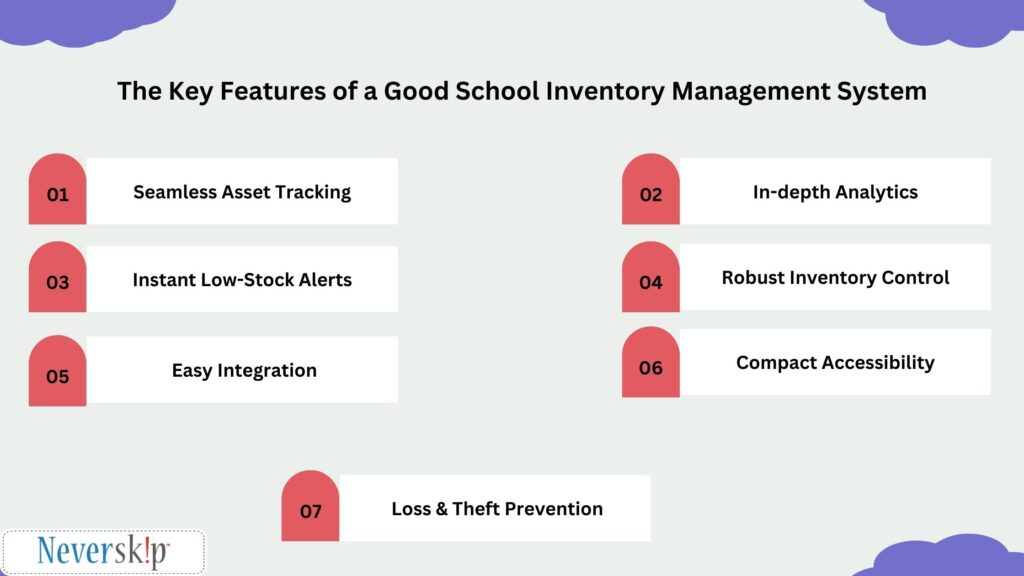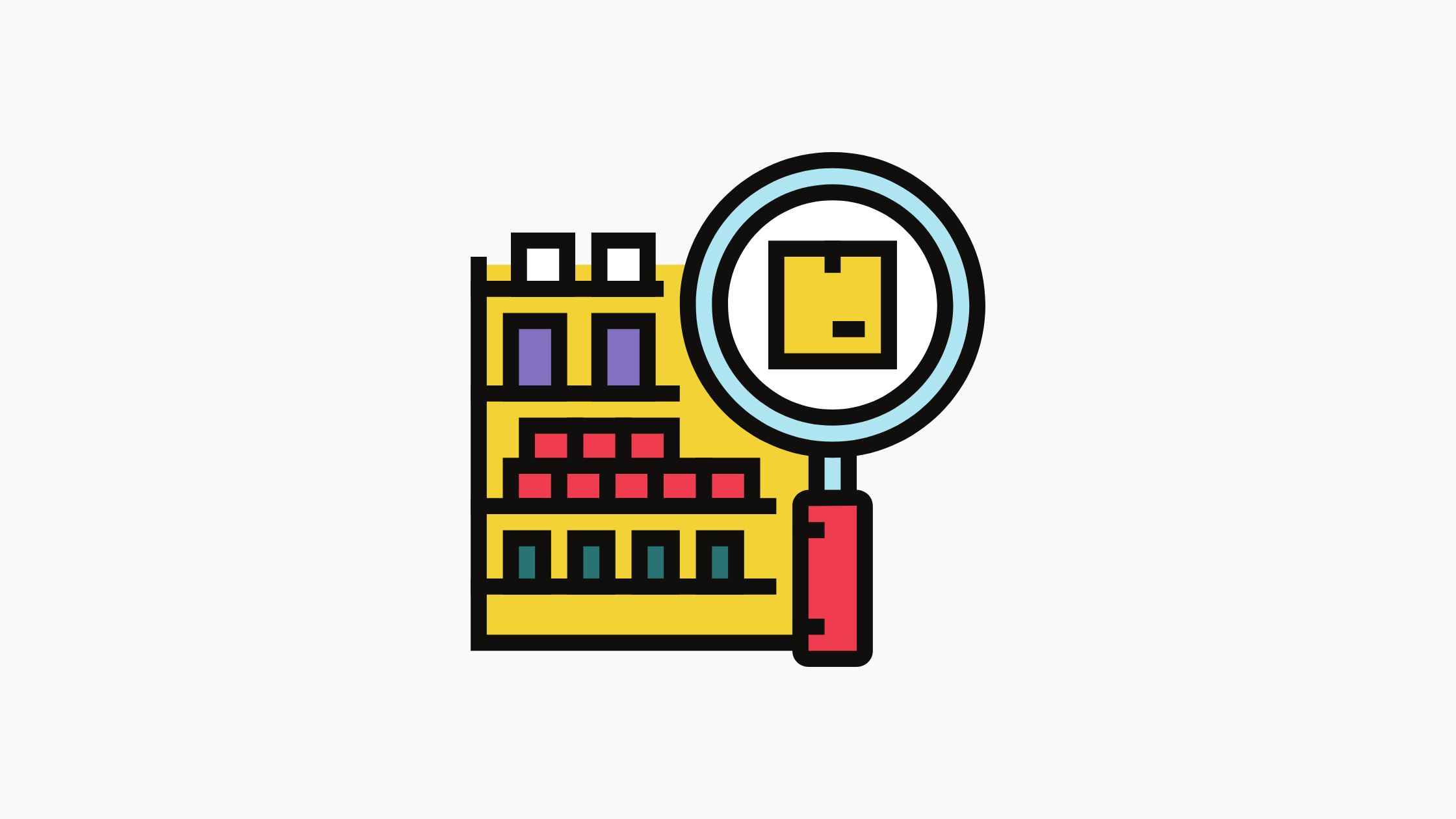Have you ever wondered how to efficiently manage your school’s myriad resources, ranging from textbooks and stationery to technological equipment and maintenance supplies?
The answer lies in a robust Inventory Management System (IMS), the unsung hero of educational institutions. As schools continue to evolve into multifaceted centers of learning, the significance of an effective IMS has surged dramatically. Starting from effective asset tracking to giving timely low-stock alerts – a good school inventory management system simplifies everything.
For instance, it helps lower the school inventory costs by 10% by reducing stock-outs and overstocks. Statistics revealed that more than 70% of the entities from diverse sectors face the issues of shortage of crucial materials including the educational institutes. And a school inventory management system can help eliminate such challenges.
In an era where seamless organization and optimal resource allocation are imperative, administrators are embracing these systems to streamline operations and enhance overall efficiency.
This burgeoning demand underscores the pivotal role that an IMS plays in not only maintaining a well-structured inventory but also in fostering an environment conducive to unimpeded learning.
In this blog, we will delve into the top features that constitute a commendable Inventory Management System, shedding light on how these attributes cater to the unique needs of schools and administrators alike.
What Is a School Inventory Management System?

A School Inventory Management System refers to a specialized software or technological solution designed to track, organize, and oversee the vast array of materials, supplies, and resources within an educational institution.
This system offers a digital framework that enables schools to efficiently manage their inventory by providing real-time visibility into stock levels, asset locations, procurement processes, and utilization patterns.
It serves as a comprehensive tool that allows school administrators and staff to monitor the availability of essential items such as textbooks, classroom supplies, laboratory equipment, computers, and maintenance materials.
At its core, a School Inventory Management System facilitates accurate record-keeping by logging every movement and transaction related to the school’s inventory. This includes information on acquisitions, disposals, transfers, and consumption of resources.
By automating these processes, the system minimizes the risk of errors, eliminates manual data entry redundancies, and reduces the likelihood of overstocking or stockouts.
A well-implemented School Inventory Management System goes beyond basic inventory control; it empowers administrators to make informed decisions based on real-time data. This data-driven approach enables the optimization of procurement cycles, identification of usage trends, and forecasting of future inventory needs. Consequently, schools can allocate and optimize school resources more effectively, mitigate wastage, and allocate budgets efficiently.
Also Read: 6 Proven Ways To Maximize Attendance With Online Student Tracking
The Key Features of a Good School Inventory Management System

A robust School Inventory Management System has emerged as an indispensable tool for schools and administrators to achieve optimal resource allocation and streamline inventory-related processes. A good IMS not only helps overcome the school inventory management challenges but offers a range of competitive solutions.
Here are the essential features that define a commendable School IMS, highlighting its significance in modern education settings.
1. Seamless Asset Tracking
A fundamental aspect of a School IMS is its ability to provide seamless asset tracking. This feature enables schools to keep a real-time record of all their resources, from textbooks and teaching materials to technological equipment and infrastructure.
Each asset is assigned a unique identifier, allowing administrators to monitor its movement, usage, and maintenance. By tracking assets at a granular level, schools can prevent misplacement, reduce the likelihood of theft, and ensure that items are available when needed.
2. Instant Low-Stock Alerts
Inventory control is a critical aspect of efficient school management. A good School IMS incorporates instant low-stock alerts, notifying administrators when stock levels of essential items are running low.
This feature prevents disruptions in daily operations by ensuring timely replenishment. Whether it’s stationery supplies, laboratory materials, or classroom resources, these alerts empower schools to maintain an uninterrupted flow of activities.
3. Easy Integration
Integration with Enterprise Resource Planning (ERP) systems is a pivotal attribute of a comprehensive School IMS. ERP integration enables seamless data sharing between various departments, such as procurement, finance, and administration.
This ensures that inventory-related information is up-to-date across the organization, streamlining processes and minimizing discrepancies. By integrating inventory management with broader school operations, administrators can achieve a holistic view of resource allocation and utilization.
4. In-depth Analytics
Data-driven decision-making is a hallmark of effective management. A School IMS with in-depth analytics capabilities provides administrators with valuable insights into inventory trends, consumption patterns, and resource utilization.
By analyzing this data, schools can make informed decisions about procurement, allocation, and budgeting. Analytics also aid in forecasting future inventory needs, preventing overstocking or stockouts, and optimizing inventory levels.
5. Robust Inventory Control
Inventory control is at the core of a School IMS. The system should allow administrators to define access levels and permissions for different users, ensuring that only authorized personnel can make changes or updates to the inventory database. This feature safeguards against unauthorized alterations and maintains the accuracy and integrity of inventory records.
6. Compact Accessibility
A user-friendly interface and accessibility across devices are vital for the effectiveness of a School IMS. Teachers, administrators, and support staff should be able to access the system from computers, tablets, or smartphones.
This ensures that stakeholders can quickly retrieve information about resource availability, request items, and contribute to the accuracy of inventory records, regardless of their location within the school premises.
7. Loss & Theft Prevention
Preventing loss and theft is a paramount concern for any educational institution. A good School IMS helps address this concern by enabling schools to attach RFID tags or barcodes to assets.
These tags facilitate efficient tracking and reduce the risk of items going missing. In the unfortunate event of theft, the system’s tracking capabilities aid in locating the stolen item and taking appropriate actions.
Also Read: Discover The Advantages Of A Robust Library Management System
The Bottom Line: Embracing the Future of School Inventory Management
The future of school inventory management lies in the seamless integration of technology that streamlines processes and maximizes resource utilization. The features highlighted in this discussion are the pillars that support this future.
As schools recognize the need for an effective IMS, Neverskip’s School Inventory Management System emerges as a compelling solution. Going beyond the mentioned features, Neverskip’s school inventory management system offers a suite of additional benefits.
It significantly enhances operational efficiency by reducing manual management efforts and providing accurate asset tracking. With its user-friendly interface and comprehensive analytics, Neverskip’s system empowers administrators to make informed decisions, optimize procurement cycles, and ultimately create a more conducive learning environment.
Book a free demo today to try it firsthand.








